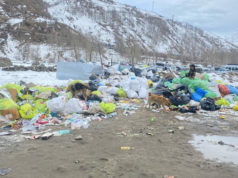The National Green Tribunal (NGT) has raised concerns over industries establishing in Himachal Pradesh’s Pandoga industrial area without obtaining the mandatory environmental clearance. The tribunal has directed the state government to submit a detailed response within four weeks explaining how these industries were allowed to operate in violation of environmental regulations.
The case revolves around three industries in the Pandoga area of Una district, which were set up under the ‘A’ and ‘B’ categories—designations that represent high environmental risk. These industries were established without the necessary environmental clearance certificates, a requirement for industries with significant environmental impact.
In a 2015 statement, the Himachal Pradesh government had assured the Ministry of Environment, Forest and Climate Change that no such industries would be established in Pandoga. The government had claimed that the industrial area would cover less than 500 hectares and would not host any ‘A’ or ‘B’ category industries, thus exempting it from obtaining the Essentiality Certificate from the central ministry. However, the NGT has now found that this assurance has been violated, with three high-risk industries operating in the area.
The NGT bench, comprising Justice Sudhir Agarwal and expert member Dr. Afroz Ahmed, highlighted that the state’s failure to secure prior environmental clearance is a direct violation of environmental laws. This lapse has now triggered a wider investigation into the possibility of similar violations in other industrial areas across Himachal Pradesh.
The Himachal Pradesh Pollution Control Board is expected to take action following the government’s response. The case will then proceed for further hearings at the NGT, potentially leading to stricter enforcement of environmental regulations in the state’s industrial policies.
This development has brought renewed attention to the need for rigorous environmental oversight in Himachal’s industrial regions. The outcome of this case could have far-reaching implications for how industrial projects are approved and monitored in the state, ensuring that future developments adhere to environmental laws and prevent further breaches.












